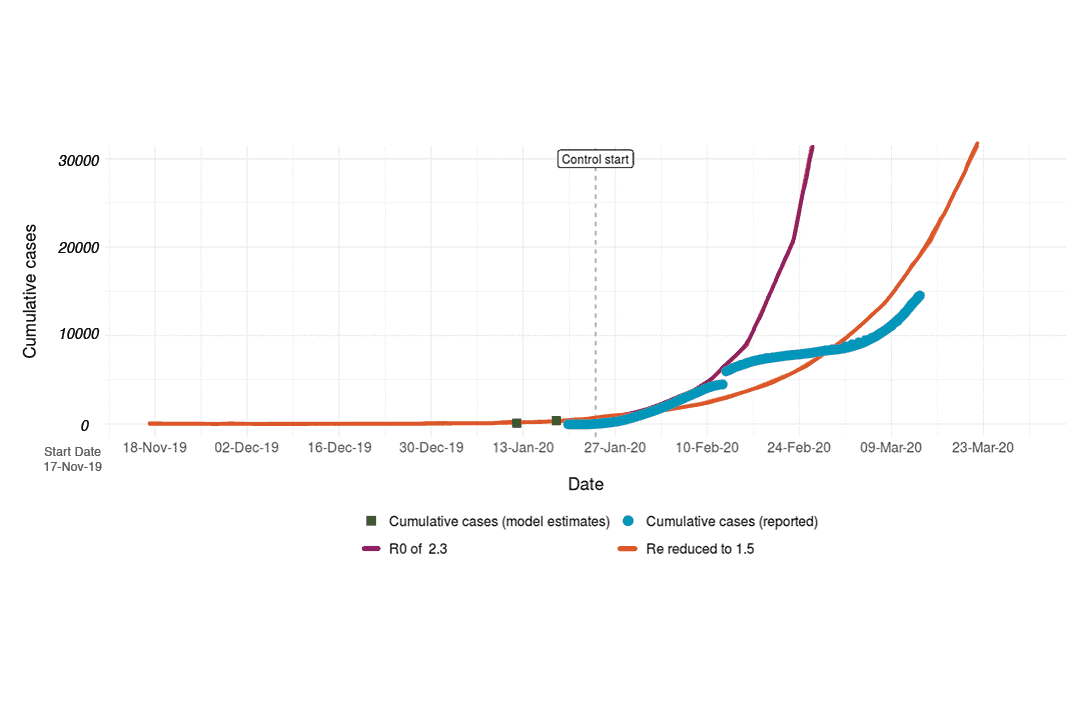COVID-19 has quickly spread around the world, impacting patients in over 140 different countries. There are over 162,000 confirmed cases, and more than 6,000 deaths as of March 14. Meanwhile, Canada has a total of 252 reported cases with one death.
As COVID-19 continues to spread around the world, public health officials have stressed the need for nations to implement controls to contain the virus in order to slow the growth of new cases before hospital systems are overwhelmed.
Effective control relies on improving our understanding of the virus, in terms of its origin, number of cases per country, and transmission potential.
Dr. Ashleigh Tuite and Dr. David Fisman, both faculty members at the University of Toronto’s Dalla Lana School of Public Health, have developed an interactive model, explained in a letter to the Annals of Internal Medicine, that visualizes the impact of effective containment.
Understanding COVID-19’s growth model
Tuite and Fisman’s model depicts how COVID-19 could spread in scenarios with and without effective methods for containment. Before diving into the findings of the model, it is important to understand its components and how they relate to each other.
The key factor that determines the infectivity of COVID-19 is called the basic reproduction number. This is the number of people that a patient with COVID-19 will successfully infect, in the absence of effective control efforts, according to the model.
The effective reproduction number is the predicted number of people that same patient will infect with effective control efforts such as quarantines put in place.
The co-authors have developed their model based on several previously published research papers on COVID-19’s infectivity, according to the notes of their model.
Model demonstrates importance of isolation
By modeling the spread of COVID-19, Tuite and Fisman wrote that it can “provide helpful insights into the growth of the 2019-nCoV epidemic that are not directly observable in publicly reported data.”
The model gives a visual representation of the concept of “flattening the curve” of COVID-19’s spread. The current growth of COVID-19 is exponential, which creates an upward curve on the graph.
Flattening the curve means reducing the rate of COVID-19’s growth, which would avoid a high number of COVID-19 patients from overwhelming health care systems at once. You can see the curve being flattened by adjusting the interactive model’s slider, reducing the effective reproduction number due to better control methods.
Control methods at U of T have included the cancellation of all undergraduate and research-stream graduate classes.
However, like many models, there are potential limitations to its accuracy. As Tuite and Fisman noted, mild COVID-19 infections may be underrepresented, as they may go unreported.
Tuite and Fisman also largely based the model on China’s epidemic. As the World Health Organization has now declared it a pandemic, the co-authors note that different countries may have different COVID-19 infection rates based on their different control methods.


